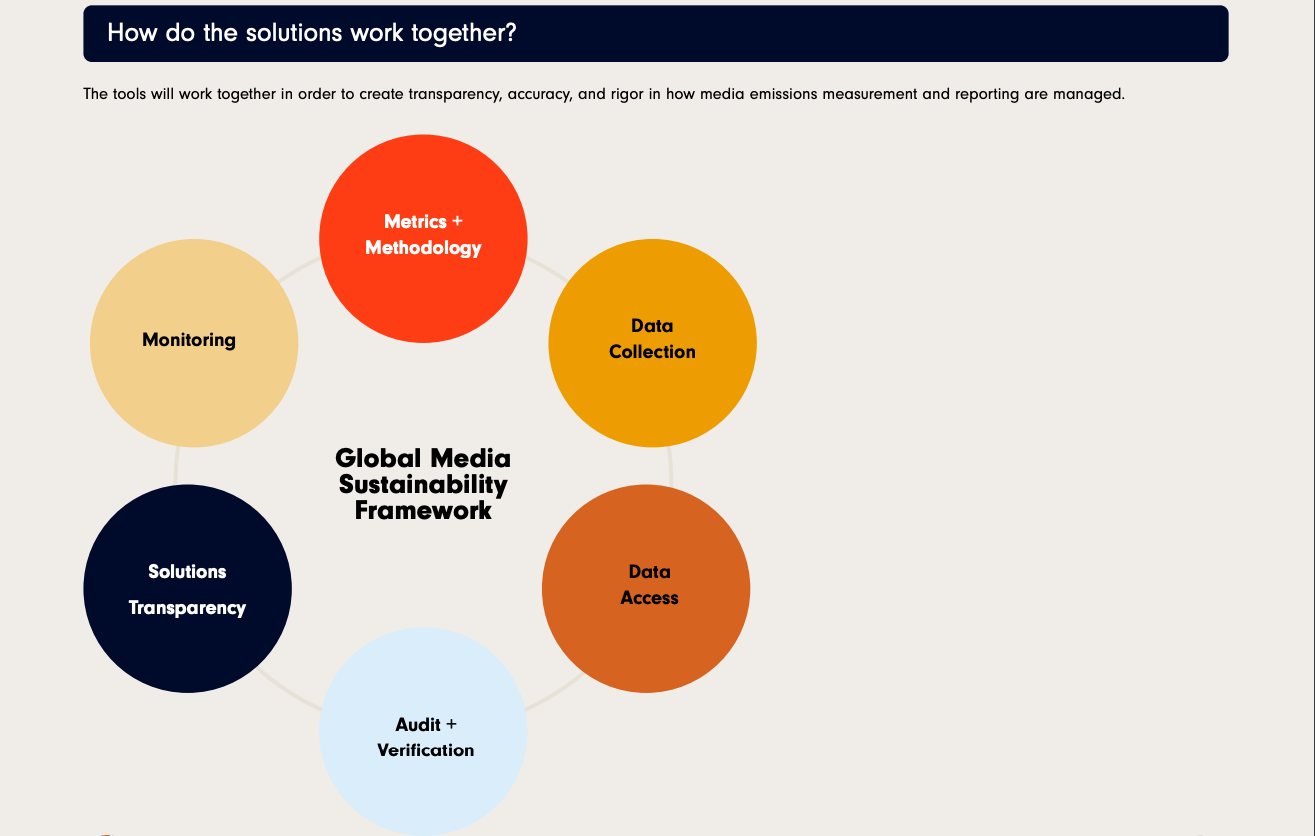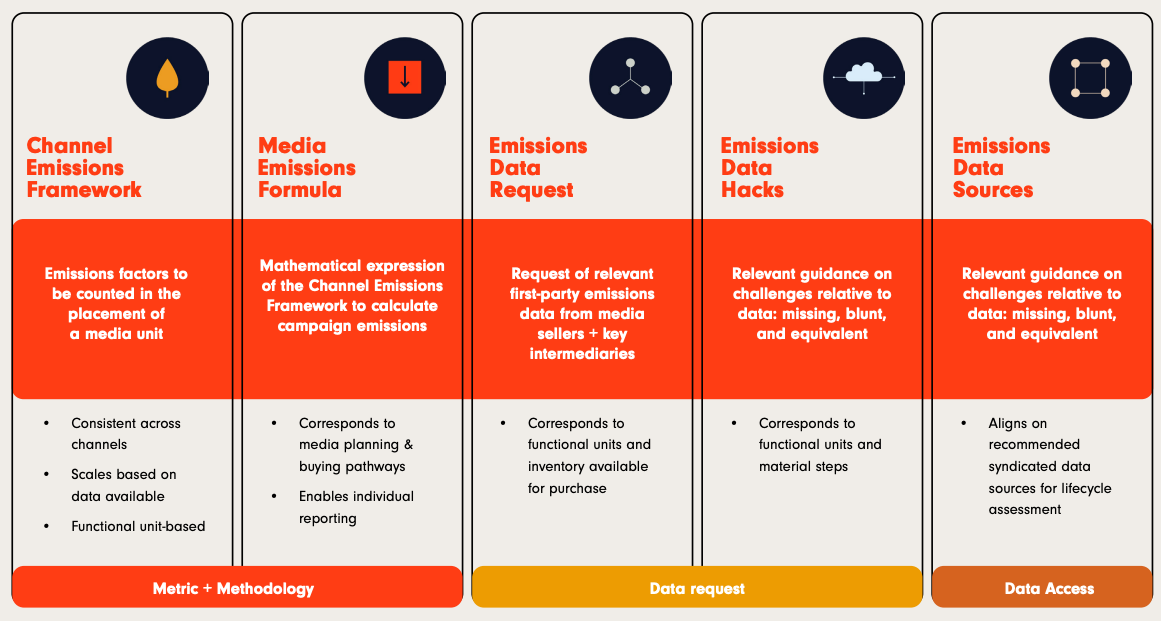Can the Global Media Sustainability Framework deliver on its promise to decarbonise advertising?
Despite the disbanding of GARM, Ad Net Zero has pledged to continue the Global Media Sustainability Framework. Should advertisers care?
Welcome to Human Algorithm, a newsletter that explores the intersection of business, media, advertising, and marketing, focusing on technology, diversity, equity, and inclusion (DEI).
I’m Shawn Lim, a journalist with over a decade of experience in the industry. My journey includes serving as the tech and media editor at Campaign Asia and a journalist at The Drum, where I covered various topics, from digital trends to creative strategies in the APAC region.
In this newsletter, I aim to unpack the latest trends and developments influencing our sectors while highlighting how technology shapes human experiences and fosters a more equitable and sustainable future in business and media.
The newsletter will remain accessible now, but you can pledge your future support for my writing. In time, I will launch tiered subscriptions with exclusive content for subscribers, including opinion pieces, videos and podcasts.
I hope you enjoy this newsletter. You can reach me at humanalgorithmcontent@gmail.com and connect with me on LinkedIn.
Despite the disbanding of GARM, Ad Net Zero has pledged to continue the Global Media Sustainability Framework. Should advertisers care?
The Global Media Sustainability Framework (GMSF), developed by the WFA’s Global Alliance for Responsible Media (GARM) and Ad Net Zero, aims to establish a standardised method for tracking carbon emissions in advertising.
The advertising industry has faced ongoing challenges in implementing sustainability practices, especially in its collaborations with fossil-fuel clients. Clean Creatives' F-List 2024 highlights that major holding companies hold 219 contracts in the Asia Pacific region.
According to a recent ANA and Scope3 report, billions of ad impressions occur daily, with every 1,000 impressions producing between 50 and over 1,500 grams of carbon dioxide—comparable to driving a gas-powered car for 10 minutes.
Each minute of social video consumption generates approximately 2.6 grams of carbon. With the average individual spending an hour daily on social video, their weekly emissions are equivalent to charging 66 smartphones.
The GMSF framework, announced at Cannes Lions 2024, results from a year-long collaboration involving brands, agencies, publishers, and vendors. It focuses on creating consistent measurement practices across media types, including TV and digital, to help advertisers make sustainable choices.
Despite GARM's recent disbandment due to legal issues, Ad Net Zero, Scope3, IAB Europe, and others will continue to oversee the framework's advancement. Key stakeholders remain committed to the initiative, ensuring ongoing development and implementation of standardised measurement tools.
This transition aims to maintain momentum in the advertising industry’s efforts to reduce climate impact, even as the framework adapts to new leadership dynamics.
Why is there a need for the framework?
The Global Media Sustainability Framework, which is voluntary, is a significant step forward for the advertising industry.
Having a standard set of principles for calculating media emissions is crucial. This allows everyone to speak the same language so that the industry can talk less about calculations and more about what matters–reduction.
Until its establishment, there was no industry-recognised media framework that media stakeholders could voluntarily adopt to reduce greenhouse gas (GHG) emissions across various media channels, including digital, print, out-of-home, and television.
Currently, there is Ad Net Zero, whose mission is for collective industry action to help achieve absolute net zero carbon emissions from the development, production and media placement of advertising by the end of 2030. Ad Net Zero also has a manifesto called Sustainable Advertising, which aims to make every ad sustainable.
Acknowledging that the framework is still in its early stages is essential. We are looking at the first iteration and expect the next wave of recommendations.
However, the framework is seen as much needed by the adaptive streaming platform SeenThis, says Andrew Hayward-Wright, group commercial director of strategic partnerships at SeenThis. While there is always room for further refinement, he explains it already provides a foundation for continued collaboration and, most importantly, progress.
“While we should strive to make the formulas as perfect as possible, we must remember that doing the right thing generally doesn't require complex calculations. What matters most is taking action,” explains Hayward-Wright.
“Now that we better understand the emissions associated with different advertising activities across the life cycle, we can all start eliminating waste. This includes waste in creative production, unnecessary bidding practices, and data waste.”
June Cheung, head of JAPAC at Scope3, predicts that the framework will accelerate the adoption of carbon measurement and move closer to the advertising industry’s overall goal of transitioning to net zero.
She notes the framework emphasises using activity-based data rather than high-level spending estimates.
“I believe this speaks to the GMSF's desire to encourage consistency in measurement and set up for actionability, as activity-based measurement provides scope for accountable and actionable emissions reductions. This means the GMSF could be the most critical initiative Ad Net Zero is steering, as it has the potential to shift the needle on emissions swiftly,” explains Cheung.
What is in the framework?
The framework focuses on measuring emissions from TV, digital, and out-of-home advertising, and it plans to include print, radio, and film formulas.
Advertisers can request data from media sellers using a standardised form, streamlining data collection. Sellers who adopt the framework will voluntarily share data origins and measurement methods to ensure clarity and consistency.
For example, vendors can enhance their processes using specific emissions data, such as a power grid's greenhouse gas mix.
A fundamental change in the framework is that brands are no longer responsible for a publisher’s carbon footprint. For instance, if a brand advertises during the Super Bowl, it will now only be responsible for the emissions related to its ad production. At the same time, the network hosting the event will account for other emissions.
The framework is designed as a foundation for future developments, with initial assumptions that can be refined with more specific data. Over time, sustainability is expected to become a standard ‘hygiene factor’ in advertising, similar to how brand safety has evolved, driving brands to align media investments with their values.
Cheung believes the framework will foster consistency in emissions measurement across providers, consistency in data requests to media vendors, and alignment to impending local and global reporting requirements, such as Singapore’s mandatory climate disclosures set up by the Accounting and Corporate Regulatory Authority (ACRA) and the European Union’s Corporate Sustainability Reporting Directive (CSRD).
“Standardisation of emissions measurement requires industry agreement on what we include and exclude when we measure, aka the boundaries. For example, do we include the energy used and consumed by the TV on which the ad was delivered?” explains Cheung.
“Aligning the formulas used to calculate emissions is also critical. Setting formulas and specific guardrails in place achieves the goal of consistency in emissions measurement.”
Is the industry onboard?
While stakeholders across the industry have voiced their support and intent to adopt the GMSF, it is still too early to make any claims about adoption because there is still much work to be done.
On its website, Ad Net Zero lists brands like L’Oreal, Diageo, Unilever, Mastercard, Reckitt, Sanofi and more as early supporters of the framework. Agencies like Dentsu, Publicis, Omnicom, GroupM and Havas, and tech giants like Meta and Google have also pledged their support.
For sustainability-focused ad tech vendors like Scope3 and SeenThis, these companies also work to ensure that their products align with the framework's first iteration.
“Doing this work now will make it incredibly easy for brands to move quickly on adoption once all the pieces are complete,” explains Cheung.
“In an August methodology working group session led by the IAB, the IAB committed to publishing a completed and actionable digital framework by the end of the year.”
Hayward-Wright adds: “SeenThis is committed to working with Ad Net Zero and all the working group members to drive the adoption of the framework and contribute to its ongoing development.”
Despite the industry's support, Celine Craipeau, vice president of sustainability at Jellyfish, cautions that true success hinges on advertisers making carbon measurement and reduction a core criterion when selecting media partners.
This requires close collaboration between sustainability or ESG teams, as well as marketing and procurement. Marketing is least familiar with carbon accounting and aligning with the Paris Agreement.
Therefore, Craipeau says sustainability leaders must guide marketing in integrating these principles into their strategies, while procurement teams should apply their established sustainability standards to marketing suppliers:
As the CSRD comes into effect, this may soon shift from a strategic advantage to a compliance necessity. It is crucial to start now, while there’s still time to find the right balance, rather than rushing to implement solutions that might negatively impact performance later.
Cheung believes a possible drawback presented by this collaborative effort is one of its strengths. She argues the framework's flexible nature gives marketers and teams at all stages of their sustainability journeys an opportunity to start. However, she cautions the industry against getting comfortable resting on the lowest common denominator.
For example, if not everyone has access to granular data and instead opts to use assumed data, then assumed data may become the acceptable standard. While that is a great starting point, specific and granular data is far more actionable, which is needed for the industry to reduce meaningfully.
“Marketers should rally around adopting this framework but can’t adopt a ‘set and forget’ mentality for meeting sustainability standards. Decarbonising media is an ongoing journey: measure, reduce, repeat,” explains Chueng.
In addition, despite GARM's dissolution after X (formerly Twitter) filed a lawsuit against the WFA, Cheung says it has been favourable to see how the industry has rallied to ensure momentum is not lost in achieving actionable measurement standards following the news.
She notes everyone involved has reinforced their commitment to moving this forward, showing the work's importance.
“It cannot be stressed enough that the framework is a work in progress. Today, boundaries and formulas are outlined for digital, TV/video and out-of-home. However, specifics around data inputs and hacks are still needed,” says Cheung.
“For example, we still need to iron out the details around understanding and aligning the data inputs to calculate emissions and what we do when no suitable data is available.”
What marketers can do now
Every marketer's sustainability journey starts with measurement.
Once emissions are understood, steps can be taken to reduce them.
Significant reductions can be made by blocking high-emission ad inventory, known as 'climate risk.'
This includes Made for Advertising sites and problematic placements, such as ads loading outside the viewable area and ads reloading frequently.
Reductions can be achieved through manual optimisation and automation via 'always-on' green media products (GMPs).
Improving media efficiency and effectiveness while reducing carbon emissions encourages marketers to continue adopting sustainable practices.
I would love to hear your thoughts! What would you like to see more of in this newsletter? Feel free to reply to this email and share your feedback!




